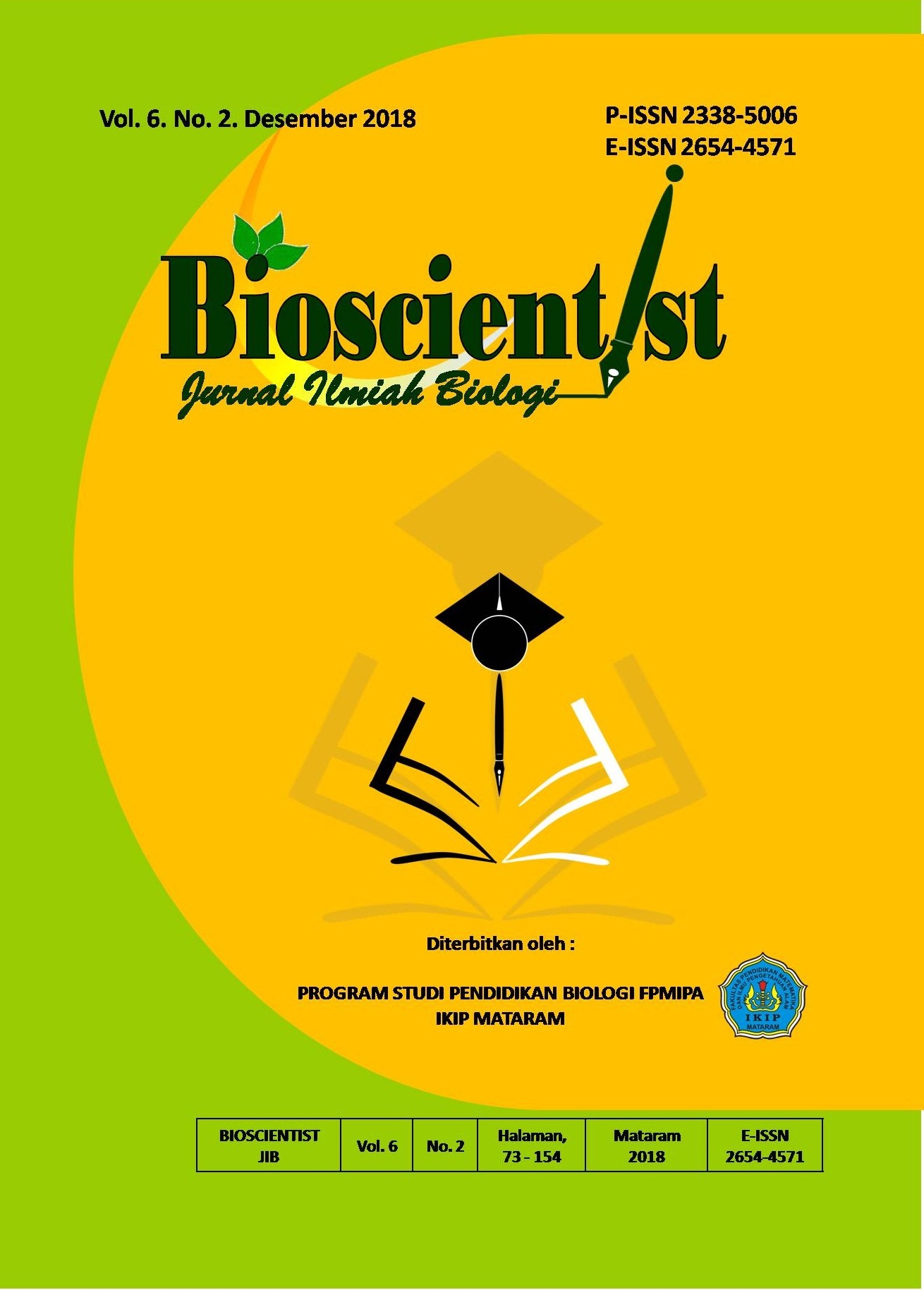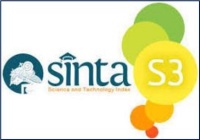KEANEKARAGAMAN HAYATI AIR TERJUN TIBU BUNTER – SESAOT SEBAGAI POTENSI EKOWISATA
DOI:
https://doi.org/10.33394/bioscientist.v6i2.2390Keywords:
Diversity, Ecosystems, Waterfalls, Ecotourism.Abstract
Lombok is one of the main islands in Indonesia that has a variety of ecosystem types that have the potential to be developed into ecotourism. The purpose of this study is to identify the biodiversity composing the ecosystem of Tibu Bunter Waterfall as one of the potentials of ecotourism. Explorative descriptive research type. The research location is located in Tibu Bunter Waterfall, Pesantek Hamlet in Pakuan Village, Narmada District - West Lombok. The results showed that there were 14 animal species and 21 plant species found around the Tibu Bunter Waterfall. Of the several animal species found, there is one unique species in the Least Concern category based on IUCN RED LIST (2011), namely needle dragonflies with a Calopterygidae pregnancy. In the plant species found there are several types of canopy plants, bamboo species, nail plants, bush plants, herbaceous plants, to mosses. It was concluded that the ecosystem of the Tibu Bunter Waterfall has high biodiversity potential and developed into an ecotourism area.References
Borror, D. J. and White, R. E. (1970). A Field Guide to the Insects of America North of Mexico. USA: Houghton Mifflin Company Boston.
Chania, A. dan Endah, D. (2017). Dampak Ekowisata Dan Agrowisatav (Eko-Agrowisata) Terhadapsosial Ekonomi Masyarakat Di Desa Cibuntu (Studi Kasus Di Desa Cibuntu, Kecamatan Pasawahan Kabupaten Kuningan, Jawa Barat). Jurnal Ilmiah Mahasiswa Agroinfo Galuh, 4(3), 434-444
Fer. (2017). NTB Kembangkan Potensi Desa Wisata. Berita Satu Online. (www.beritasatu.com/destinasi/412878-ntb-kembangkan-potensi-desa-wisata.html).
Haney, J. F. et al. (2013). Calopterygidae. beta version 1.0 released 2013. University of New Hampshire Center for Freshwater Biology.
Hidayat. (2014). Pola Sebaran dan Asosiasi Bayur (Pterospermum javanicum Jungh.) Di Kawasan Taman Nasional Gunung Rinjani. JPHKA 11(3). (http://ejournal.forda-mof.org/latihan/index.php/JPHKA/article/view/1053).
Khafid, S. (2018). Kontes Durian di Taman Wisata Sesaot Lombok. Tempo Media Online, (https://travel.tempo.co/read/106652/kontes-durian-di-taman-wisata-sesaot-lombok).
Pamungkas, D. W. dan Ridwan, M. (2015). Keragaman jenis capung dan capung jarum (Odonata) di beberapa sumber air di Magetan, Jawa Timur. Pros Seminar Nasional Masyarakat Biodiversitas Indonesia (pp. 1295-1301). Semarang, Indonesia. Fakultas MIPA, Universitas Negeri Semarang.
Phan, Q. (2011). Mnais mneme. The IUCN Red List of Threatened Species 2011: e.T167210A6315828. http://dx.doi.org/10.2305/IUCN.UK.20112.RLTS.T167210A6315828.en).
Tjiptrosoepomo, G. (2002). Taksonomi Tumbuhan (Spermatophyta). Yogjakarta: Gajah Mada University Press.
Undang-undang Tahun 2009 Tentang Kepariwisataan. (2009). Pasal 10 tentang Kepariwisataan. Jakarta.













